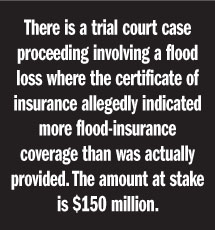One of the most daunting (and often reviled) tasks facing agencies today involves the processing of certificates of insurance. This is an activity that typically generates no revenue for the agency but creates significant operational costs and dramatically heightens the agency's E&O exposure.
 One consultant estimates the cost to issue a plain-vanilla ACORD 25 document at $7; and if some customization is required, it could be as much as $15-18. This figure could go even higher when responding to requests that insist upon the completion of some sort of “compliance checklist” that consists of dozens of broad, vague, generalized questions about policy coverages.
One consultant estimates the cost to issue a plain-vanilla ACORD 25 document at $7; and if some customization is required, it could be as much as $15-18. This figure could go even higher when responding to requests that insist upon the completion of some sort of “compliance checklist” that consists of dozens of broad, vague, generalized questions about policy coverages.
For example, an agent was given a multipage questionnaire he was required to complete, along with an “affidavit” warranting that coverage was in place and conformed to the construction contract (of which he had read two of 88 pages) that was to be notarized and witnessed by a disinterested third party and sent to the certificate holder via certified mail. This document required that over 400 entries be completed.
Recommended For You
Want to continue reading?
Become a Free PropertyCasualty360 Digital Reader
Your access to unlimited PropertyCasualty360 content isn’t changing.
Once you are an ALM digital member, you’ll receive:
- Breaking insurance news and analysis, on-site and via our newsletters and custom alerts
- Weekly Insurance Speak podcast featuring exclusive interviews with industry leaders
- Educational webcasts, white papers, and ebooks from industry thought leaders
- Critical converage of the employee benefits and financial advisory markets on our other ALM sites, BenefitsPRO and ThinkAdvisor
Already have an account? Sign In Now
© 2025 ALM Global, LLC, All Rights Reserved. Request academic re-use from www.copyright.com. All other uses, submit a request to [email protected]. For more information visit Asset & Logo Licensing.








